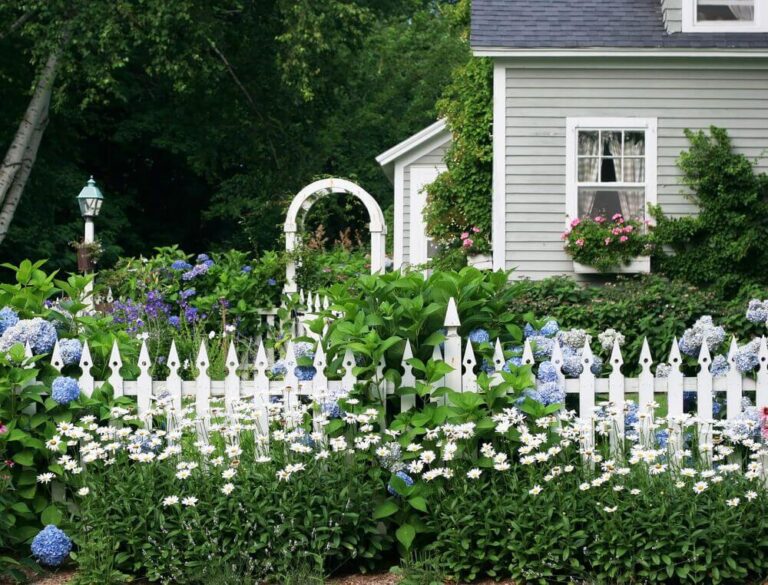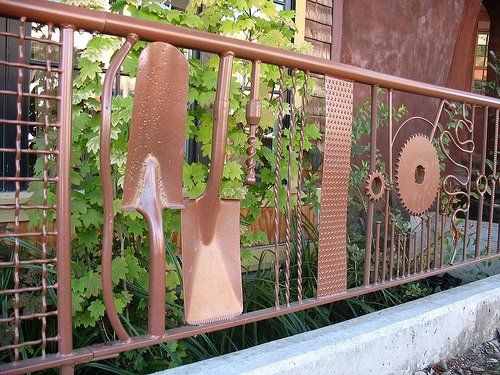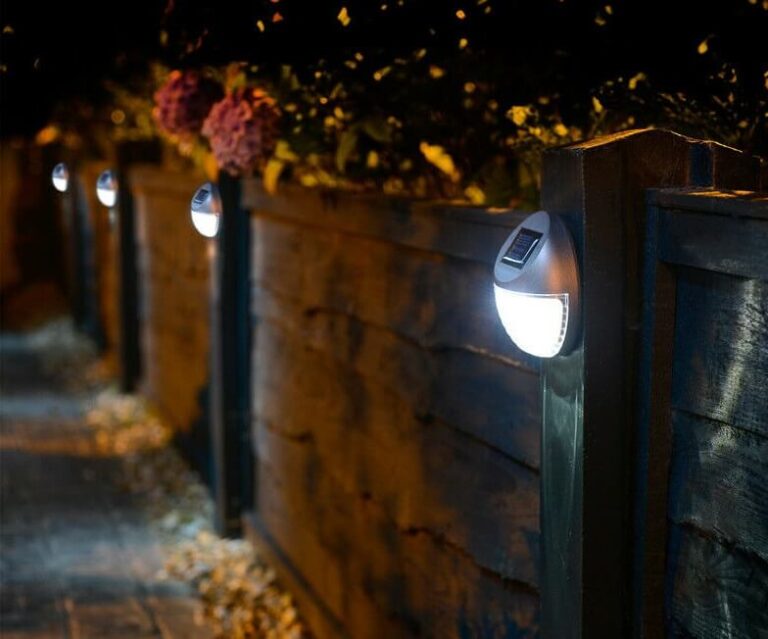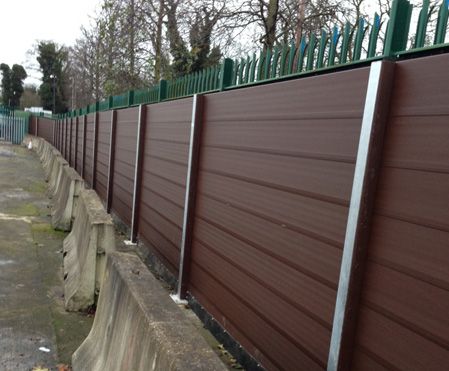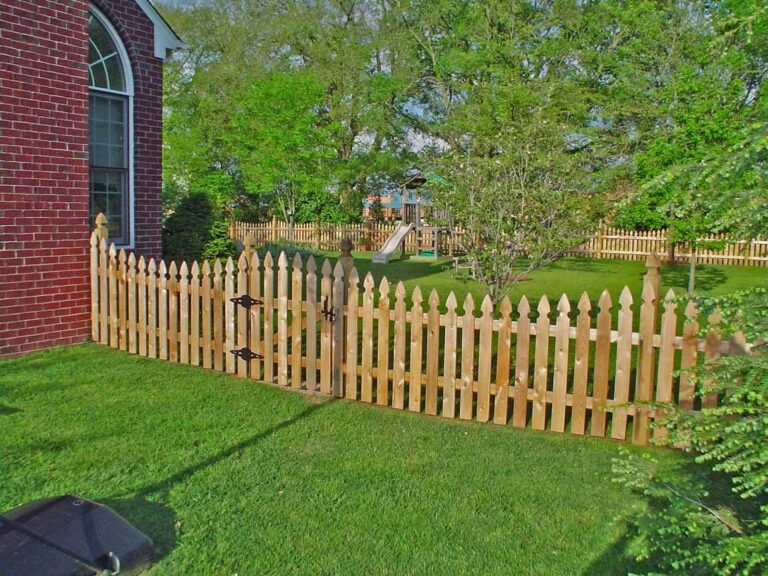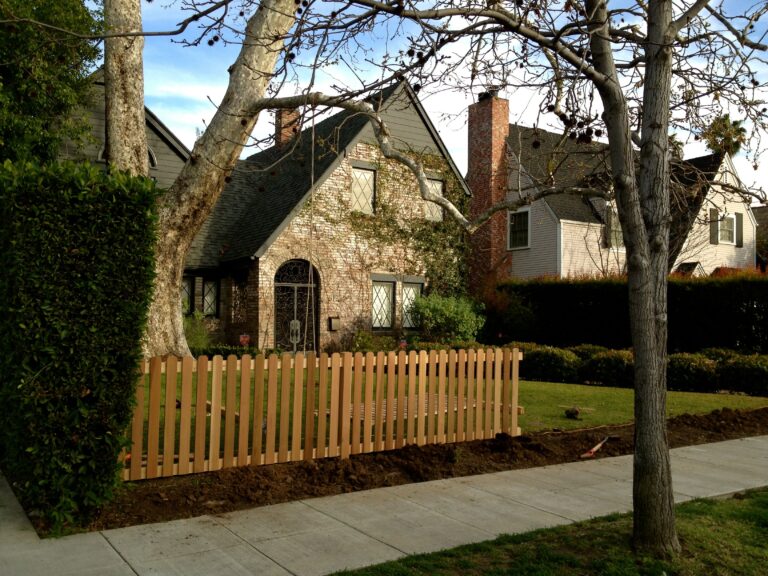Fencing can greatly impact garden design by providing security, defining boundaries, and adding aesthetic appeal. It can influence the layout and overall look of the garden, as well as impact the choice of plants and accessories.
When considering a garden design, the type of fencing used plays a key role in creating the desired atmosphere and functionality.
Whether it’s a traditional picket fence adding charm to a cottage garden or a modern sleek design complementing a contemporary landscape, the choice of fencing can significantly shape the overall look and feel of the outdoor space.
Understanding the impact of fencing on garden design is essential for creating a cohesive and attractive outdoor environment.
This article explores the various ways in which fencing can influence garden design, providing insights and ideas for creating an inviting and harmonious outdoor space.

Enhancing Privacy And Security
When it comes to garden design, the implementation of fencing plays a significant role in enhancing privacy and security.
An essential aspect of this process is choosing the right fencing partner. For those in the Vacaville area, a great option is available.
By choosing to Schedule Your Consultation with our expert team, you can ensure that your garden not only meets your aesthetic needs but also adheres to the highest standards of quality and durability.
Our team specializes in providing tailored fencing solutions that align with your unique garden design and security requirements.
Creating A Secluded Retreat
Fencing is a key element in establishing a secluded retreat within a garden.
By strategically positioning fences around specific areas, it is possible to create intimate and private spaces where individuals can unwind and enjoy moments of solitude.
Whether it’s a cozy seating area or a serene meditation spot, fencing plays a crucial role in defining boundaries and providing a sense of seclusion.
Protecting The Garden From Wildlife
When it comes to safeguarding the garden from wildlife intrusion, fencing serves as a primary defense mechanism.
By enclosing the garden space with sturdy fencing, the risk of unwelcome visits from wildlife such as deer, rabbits, or rodents is significantly minimized.
This not only preserves the integrity of the garden but also ensures that plants and flowers thrive undisturbed.
Security Measures And Considerations
Security is an essential aspect of garden design, especially for homeowners seeking to protect their property and outdoor assets.
By integrating durable fencing solutions, such as high-quality metal or composite materials, individuals can establish a robust security barrier.
In addition, incorporating features such as locked gates, security cameras, and motion sensor lighting further bolsters the protective measures for the garden space.
Defining Aesthetics And Style
When it comes to garden design, the visual impact of fencing cannot be underestimated.
The choice of fencing materials, colors, and styles plays a crucial role in defining the aesthetics and overall style of a garden.
Integrating fencing with landscape design, choosing the right materials and colors, as well as complementing architectural features are key factors in creating a cohesive and visually appealing outdoor space.
Integrating Fencing With Landscape Design
Integrating fencing seamlessly into the landscape design is essential for creating a harmonious and well-balanced outdoor space.
Consider the natural elements and existing plantings in the garden when selecting the style and height of the fence.
By blending the fencing with the surrounding environment, it can act as a unifying element that enhances the overall visual appeal of the garden.
Choosing The Right Materials And Colors
The choice of fencing materials and colors greatly influences the overall look and feel of the garden.
Whether opting for natural wood, sleek metal, or durable vinyl, selecting materials that complement the existing architectural style of the property is crucial.
Additionally, the color of the fence should harmonize with the surrounding landscape and architectural elements, ultimately contributing to the cohesive aesthetic of the garden.
Complementing Architectural Features
When selecting fencing for a garden, considering the architectural features of the property is key.
The fence should be designed to complement the existing architectural style, whether it be modern, traditional, or rustic.
By echoing the architectural details in the fencing design, a sense of continuity and cohesion can be achieved, adding to the overall visual appeal of the garden.
Impact On Plant Selection And Maintenance
When designing a garden, one of the key elements to consider is the fencing, as it has a significant impact on the selection and maintenance of plants.
Fencing influences the type of plants that can thrive in the garden, considering factors such as sunlight exposure and shade.
Additionally, the maintenance of plants can be affected by the type of fencing in place. Understanding these impacts is crucial for creating a well-balanced and visually appealing garden design.
Fencing’s Influence On Plant Choices
The type of fencing in a garden can heavily influence the selection of plants that can thrive in that space.
For instance, tall and dense fencing can create shaded areas that are ideal for shade-loving plants such as ferns, hostas, and astilbes.
Alternatively, open-style fencing allows for ample sunlight, making it suitable for sun-loving plants like roses, lavender, and ornamental grasses.
Hence, the choice of fencing material and style can dictate the plant varieties that will flourish in a garden.
Considerations For Sunlight And Shade
When considering the impact of fencing on plant selection, it’s important to factor in the sunlight and shade patterns that the fencing creates.
For instance, solid fencing can create areas of deep shade, which may limit the types of plants that can thrive there.
On the other hand, open fencing allows for more sunlight penetration, providing opportunities for a diverse range of sun-loving plants to be incorporated into the garden design.
Understanding these sunlight and shade dynamics is essential for choosing the appropriate plants for different areas of the garden.
Maintenance Implications And Tips
The type of fencing in a garden can also affect the maintenance of plants. For example, dense fencing can create sheltered areas where moisture may accumulate, requiring additional attention to prevent plant diseases and rot.
Open-style fencing, on the other hand, may result in increased exposure to wind and sun, necessitating regular watering and pruning for plant maintenance.
Therefore, it’s essential to consider the maintenance implications of the fencing type when planning the garden layout.

Frequently Asked Questions
What Are The Benefits Of Fencing A Garden?
Fencing a garden offers security and privacy, prevents pets and wildlife from damaging plants, provides a barrier against pests, and adds aesthetic appeal to the property. It also helps create a defined space for gardening and outdoor activities.
Why Do Gardens Need Fences?
Gardens need fences to define boundaries, protect plants from animals, deter unauthorized entry, and enhance privacy and security.
Additionally, fences can add aesthetic appeal to the garden. Properly installed fences help maintain the garden’s beauty and protect its plants and structures, contributing to a well-maintained and secure outdoor space.
Why Is The Fencing Important?
Fencing is important for safety, security, and privacy. It also adds value to the property and enhances its aesthetic appeal.
Additionally, it can define boundaries and protect against unwanted intrusion, making it an essential feature for residential and commercial properties.
Conclusion
Incorporating fencing into garden design can significantly enhance the overall aesthetics and functionality of the outdoor space.
Whether it’s a traditional picket fence or a modern steel design, the right fencing can define boundaries, add privacy, and create visual interest.
By combining practicality with style, fencing becomes an integral part of any well-planned garden.


